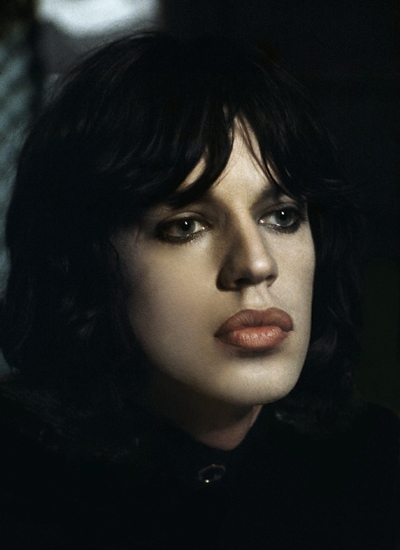‘Value and worth in any of the arts has always been about timing,’ writes British director Nicolas Roeg at the age of 84. Few directors understand this better — this matter of good and bad ‘timing’ — than the maker of Performance, Roeg’s debut film of 1970. Even starring Mick Jagger — then the centrefold of popularity — the film stunned critics by its experimental otherness: they hated it. By now, though, opinions have changed and Performance — once, out of its time — is upheld, along with Roeg’s other works, as among the greatest and boldest examples of British cinema. Roeg, however, has only ever been consistent in his commitment to pushing the boundaries of accepted practice in his medium. ‘There is nothing more dating,’ he says, ‘than “We always do it that way”.’
This is the Roeg of The World is Ever Changing, his first book: forward-looking, curious, and still animatedly debating the nature of time and its interplay with memory and imagination. Time and all its indexes (ageing; dreams) are the common theme of Roeg’s some 15 films: be it reversing film tape in Walkabout to bring a fallen buffalo back to its feet; anatomising a love affair through flashbacks in Bad Timing (1980); or depositing David Bowie’s red-headed alien down a foxhole of a future time in his 1976 sci-fi, The Man Who Fell to Earth.
Hard, then, to imagine Roeg writing the conventional memoir; arranging his life, A to Z, in anodyne chronology. No — The World is less autobiography than a bombinating mix of experiential advice, memorable encounters, and animate, annotative thinking. Sinuous and talkative, the book is a pleasure to read, and there’s satisfaction in knowing it could not have been written by anyone but Roeg — not even by the most rigorous historian with access to his library desk, photographs of which decorate the book’s themed chapter headings (‘Image’; ‘Editing’; ‘Actors’; ‘Script’) in the enhanced edition for iPad.
Roeg’s characterful voice, his narrative style, is by far the book’s biggest appeal. Companionable, modest, elliptical like his films, he writes in layman’s terms of his creative process and the ideas that have consumed him during half-a-century’s exposure to film. Not dissimilar to Mark Cousins’s voiceover narration of the 15-part The Story of Film (2011), Roeg’s fervent musings on the evolution of film by developing technology, which he embraces, and his slow tack upstream through the film industry (never, apparently, in any rush) spool into larger, universal themes and metaphysical reflection. For Roeg, as for Cousins, film is anybody’s game.
The better for readers unfamiliar with Roeg’s filmography, it’s film, not Roeg, at the centre of his universe. It’s towards a recognition of its pleasures and its enigmatic power as anthropological memory that Roeg directs his tales of the trade. Starting out as an apprentice in a West End editing suite, graduating to camera operator, later assistant director, before turning heads as a cinematographer, Roeg has had the rare fortune to see into many corners of the industry, and enjoys detailing his humbler postings just as much as his latter-day autonomy. As a director of photography, he worked under icons like David Lean (Lawrence of Arabia) and François Truffaut (Fahrenheit 451), and in earlier years, as an assistant to George Cukor, the legendary director of Hollywood rom-coms. Elsewhere, Roeg recalls the filming of the famous, X-certificate love scene between Julie Christie and Donald Sutherland in Don’t Look Now, discusses the necessary simplicity of a good and workable script, his wranglings with producers (‘Personally, I like them’) and the hits as well as the misses that cost him Brando for a lead and Pinter for a writing partner.
But most interesting of all are the smaller, human histories: Gladys Bremson of his apprenticeship days — ‘a very nice woman’ — who would lace up the ‘Editola’ machine so he could run a reel of film backward and forward, and learn its material properties; and the tantalising mystery of a producer’s periodically disappearing from a critical script meeting to (as was later discovered) talk himself up in a vestibule mirror. (On a related note, mirrors, says Roeg, are the very essence of cinema.)
Roeg is magnanimous in his gratitude — ‘I remember someone giving me “just a tip” about many, many things — just a little tip’ — and gives back in guidance, sharing absolutely. If it’s a gift, as it feels, The World is Ever Changing is lovingly packaged — especially the interactive edition, which uses colour photos and ‘to camera’ footage of Roeg musing in an easy chair.
All in all, it’s a delightful object: a feelingly subjective navigation through the functional world of film, and a fitting testament to Roeg’s unique contribution to cinema.






Comments